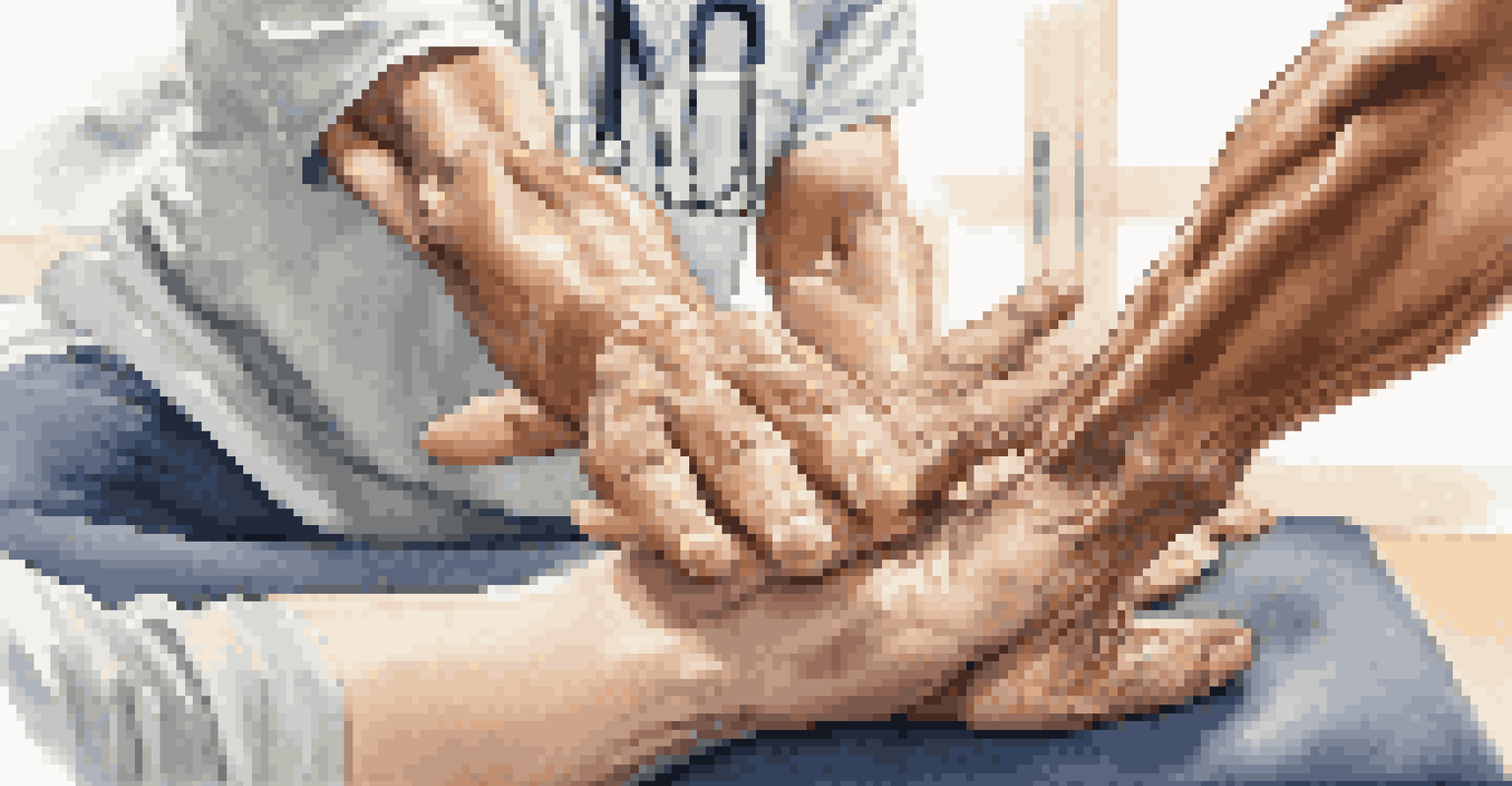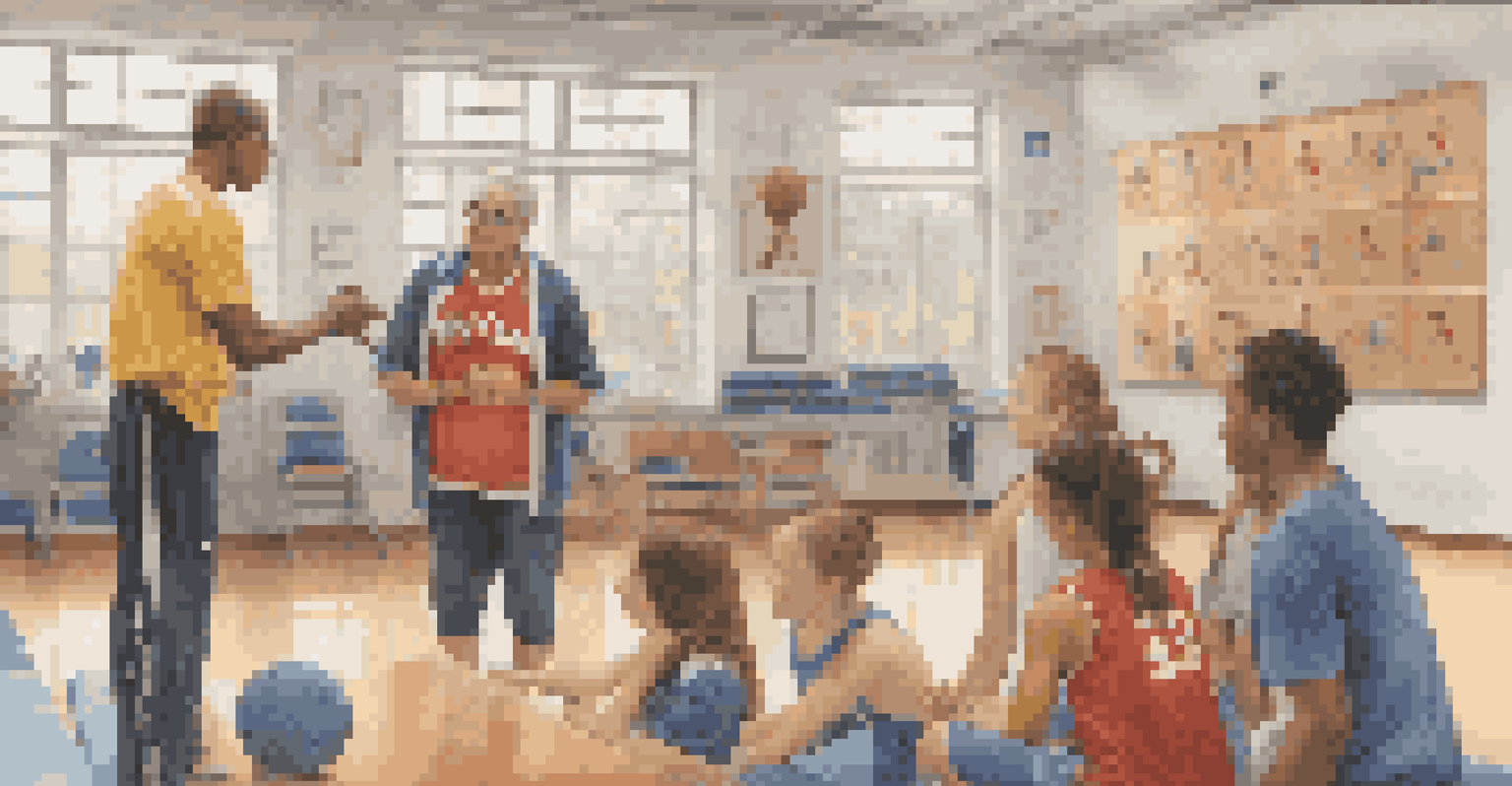The Role of Family Physicians in Sports Injury Management

Understanding the Role of Family Physicians in Sports Health
Family physicians play a crucial role in sports health, acting as the first line of defense when injuries occur. They possess a broad knowledge that encompasses various aspects of health, making them well-equipped to assess and treat sports-related injuries. This holistic approach allows them to consider not just the physical aspects of an injury but also emotional and social factors that may impact recovery.
An ounce of prevention is worth a pound of cure.
When athletes get injured, the immediate response often comes from a family physician who can diagnose the issue and provide initial treatment. Their familiarity with the athlete's medical history and lifestyle means they can tailor their recommendations to fit individual needs. This personalized care is essential for ensuring a safe and effective recovery process.
Moreover, family physicians often collaborate with other specialists, such as orthopedic surgeons or physical therapists, to create a comprehensive treatment plan. This cooperative approach helps facilitate quicker recoveries and better outcomes for athletes. In this way, family physicians serve as central figures in the sports injury management team.
Preventive Care: The Family Physician's Approach
Prevention is a big part of sports injury management, and family physicians are at the forefront of this initiative. By conducting thorough pre-participation physical exams, they can identify risk factors that might predispose athletes to injuries. These exams not only assess physical readiness but also educate athletes about safe practices and injury prevention strategies.

Additionally, family physicians often provide valuable advice on training regimens, nutrition, and recovery techniques, which can significantly reduce the risk of injuries. For instance, they might recommend proper warm-up routines or suggest gradual increases in training intensity. Through these preventive measures, physicians empower athletes to take charge of their health.
Family Physicians: Injury First Responders
Family physicians serve as the first line of defense in sports health, providing initial diagnosis and treatment for injuries while considering an athlete's overall well-being.
By fostering open communication with athletes, family physicians can create an environment where athletes feel comfortable discussing their concerns. This proactive approach can lead to early intervention, which is crucial for preventing minor issues from escalating into serious injuries. Ultimately, prevention is key to maintaining an athlete's performance and well-being.
Diagnosis and Initial Treatment of Sports Injuries
When an athlete sustains an injury, accurate diagnosis is paramount. Family physicians utilize their clinical skills to assess the injury through physical examinations and, if necessary, imaging studies like X-rays or MRIs. This thorough diagnostic process ensures that the athlete receives the appropriate treatment right from the start.
The greatest wealth is health.
Once a diagnosis is made, family physicians can initiate treatment protocols tailored to the specific injury. This may include prescribing rest, ice, compression, and elevation (RICE) for minor injuries, or referring the athlete for specialized care if the injury is more severe. Their ability to make quick and informed decisions can significantly impact recovery times and overall outcomes.
Furthermore, family physicians often educate athletes on self-management techniques that can aid recovery. This might involve guiding them on pain management strategies or rehabilitation exercises. By equipping athletes with knowledge, family physicians enhance their ability to recover effectively and safely return to their sport.
Rehabilitation and Recovery Support
Rehabilitation is a critical stage in the recovery process, and family physicians are key players in this phase. They develop individualized rehabilitation plans that address the unique needs of each athlete, ensuring that the recovery process is both effective and safe. This personalized attention helps athletes regain strength and confidence after an injury.
Family physicians often coordinate with physical therapists to create a seamless recovery plan. They monitor the athlete's progress, making adjustments as necessary to avoid setbacks. This collaborative effort not only speeds up recovery but also minimizes the risk of re-injury, which is a common concern among athletes.
Prevention Through Education
By conducting pre-participation physical exams and offering guidance on training and nutrition, family physicians play a vital role in preventing sports injuries.
Moreover, family physicians provide emotional support during rehabilitation, helping athletes cope with the psychological effects of being sidelined. Encouragement and positivity can make a significant difference, as mental resilience is crucial for returning to peak performance. Their holistic involvement ensures that athletes are supported both physically and mentally throughout their recovery journey.
Education and Advocacy in Sports Medicine
Family physicians are not just caregivers; they are also educators. They play an essential role in teaching athletes about injury prevention, proper techniques, and the importance of listening to their bodies. This educational aspect helps athletes make informed choices, reducing the likelihood of future injuries.
By advocating for safe sports practices at community levels, family physicians can influence policies that promote athlete health and safety. They may engage in community outreach programs or workshops that educate young athletes and their families about the importance of proper training and injury awareness. This proactive stance fosters a culture of safety in sports.
Additionally, family physicians contribute to research and discussions surrounding sports medicine, advocating for evidence-based practices. Their insights help shape guidelines and recommendations that benefit the broader athletic community. This commitment to education and advocacy reinforces their pivotal role in the overall health of athletes.
Managing Chronic Sports Injuries
Some athletes face chronic injuries that require ongoing management, and family physicians are crucial in this area. They help athletes navigate the complexities of chronic pain and injuries, focusing on long-term health rather than just short-term solutions. This comprehensive approach is essential for sustaining an athlete's career.
Family physicians often utilize a combination of treatments, including physical therapy, medication, and lifestyle modifications, to manage chronic conditions effectively. They work closely with athletes to develop a management plan that allows for continued participation in their sport while minimizing pain and disability. This balance is key for athletes who wish to remain active.
Collaborative Care for Recovery
Family physicians work closely with other healthcare professionals to create comprehensive treatment and rehabilitation plans, ensuring athletes receive optimal support during recovery.
Moreover, family physicians provide ongoing support and monitoring, ensuring that athletes understand their conditions and how to manage them. This proactive involvement can lead to improved quality of life and performance, allowing athletes to thrive despite their chronic injuries. Their commitment to holistic care defines their integral role in sports injury management.
Collaboration with Other Healthcare Professionals
Family physicians often collaborate with a network of healthcare professionals to deliver comprehensive care for sports injuries. This teamwork may include physical therapists, orthopedic specialists, trainers, and even nutritionists, all working together to ensure the athlete receives the best care possible. Such collaboration enhances the recovery process and promotes optimal outcomes.
When family physicians identify the need for specialized care, they facilitate referrals to the appropriate professionals, ensuring that athletes receive targeted treatments. They remain involved in the care continuum, coordinating between various specialists to track the athlete's progress. This cohesive approach is vital for addressing the multifaceted nature of sports injuries.

Additionally, this collaborative model extends beyond treatment; it encompasses preventive strategies as well. By sharing insights and strategies among professionals, family physicians help create safe training environments and injury prevention programs. This united front not only aids individual athletes but also bolsters the health of the entire sports community.